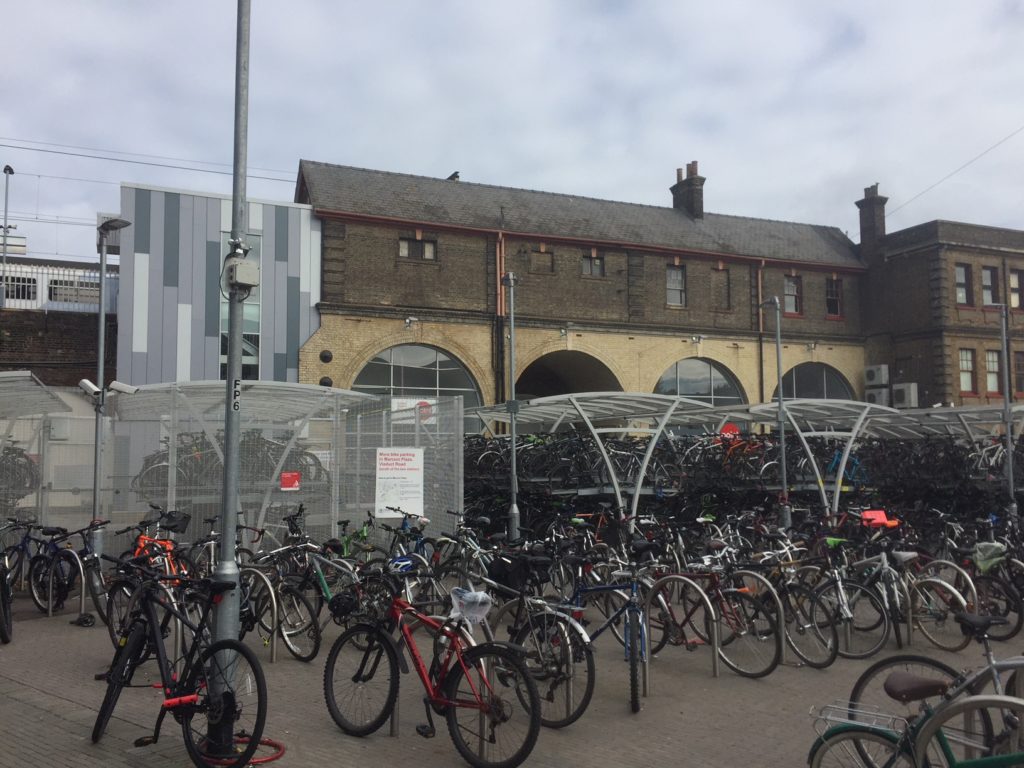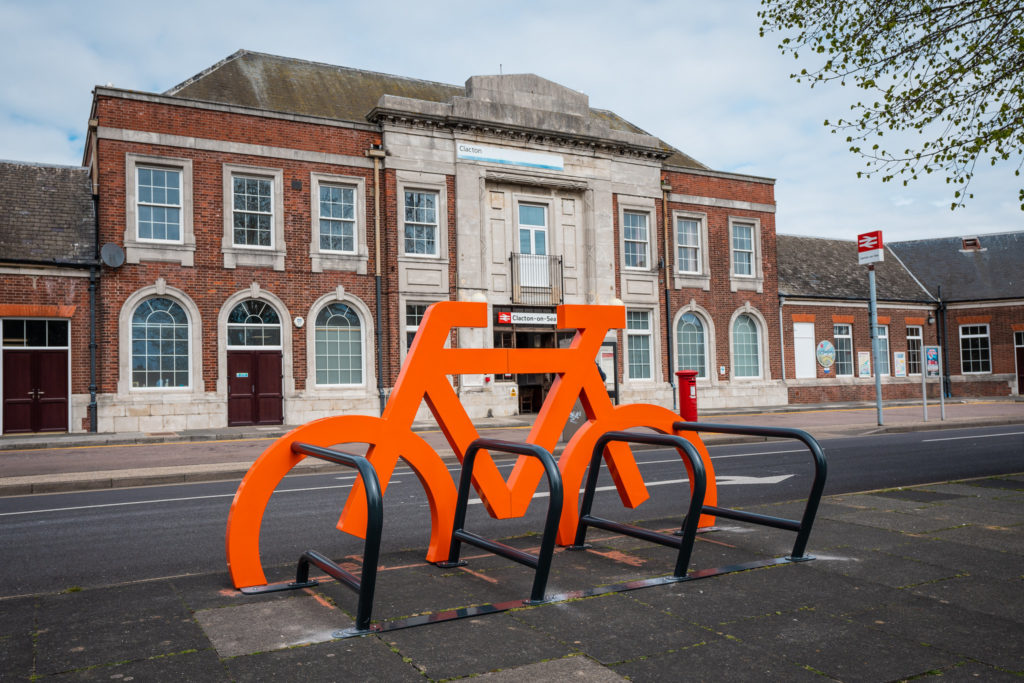Strategy behind the Standard
Cycle parking is integral to any cycle network, and to wider transport systems incorporating public transport. The availability of secure cycle parking at home, the end of a trip or at an interchange point has a significant influence on cycle use.
Cycle parking should be provided at the following locations:
- Place of residence;
- Interchanges with other modes of transport;
- Short stay destinations such as shops and cafes; and
- Long stay destinations such as for work and education
On-street cycle parking can be a cost effective ‘quick win’ that is easy to deliver. Parked bicycles provide evidence of demand and patterns of use and can form part of a monitoring regime. Space for cycle parking should be considered at the earliest possible stage of a scheme design or building development.
Best Practice Guidance to be used by Essex Highways.
For best practice guidance on cycle parking, see Section 11 of the LTN 1/20 Cycle Infrastructure Design.
This section provides information about the design of cycle parking, dimensions, types and general principles. It also includes information about suggested minimum cycle parking standards for new developments.
ECC Recommendations
The fear or direct experience of vandalism and theft deters cycling. This includes lack of convenient space to keep a bike in the home, which can be particularly problematic in apartments and for disabled cyclists who need easy access for their cycle. Investment in new routes and infrastructure may not reach its full potential if cycle parking security is not considered at the planning and design stages. Cycle parking provision should consider all types of cycle vehicle and all types of cycle user.
Personal security within cycle parking areas may also be a concern if the parking is remote and not overlooked by adjacent buildings.
Cycle parking, and routes to and from it, should be clearly marked, overlooked, well maintained, well-lit and integrated into the built environment.
Short stay cycle parking should be convenient to access and secure.
Security is the primary concern for longer stay cycle parking. Many users would be willing to trade some convenience for additional security, such as CCTV, coverage, shelter from weather and secure access.
Cycle parking in dwellings must be convenient.
A proportion of the cycle parking (typically 5%) should be provided for non-standard cycles to accommodate people with mobility impairments and cargo bikes.
Spare capacity should always be provided to cater for growth and turnover.
Internal Stakeholder Consultation
Whenever designing new or upgrading existing cycling infrastructure, ensure the following depts./teams are consulted: Maintenance, Asset Management, Network Assurance, Road Safety
Suggested Minimum Cycle Parking Capacity for Different Types of Land Use
| Land Use Type | Sub Category | Short Stay requirement | Long Stay requirement |
| All | Parking for adapted cycles for disabled people | 5% of total capacity | 5% of total capacity |
| Retail | Small (<200 sqm) | 1 per 100 sqm | 1 per 100 sqm |
| Medium (200-1000sqm) | 1 per 200 sqm | 1 per 200 sqm | |
| Large (>1000 sqm) | 1 per 250 sqm | 1 per 500 sqm | |
| Employment | Office/ Finance (A2/ B1) | 1 per 1000 sqm | 1 per 200 sqm |
| Industrial/Warehousing (B2/B8) | 1 per 1000 sqm | 1 per 500 sqm | |
| Leisure and Institutions | Leisure centres, assembly halls, hospitals and healthcare | Greatest of: 1 per 50 sqm or 1 per 30 seats/ capacity | 1 per 5 employees |
| Educational institutions | – | Based on travel plans, or Minimum: 1 per 20 staff 1 per 10 students | |
| Residential | All except sheltered/ elderly housing or nursing homes | – | 1 per bedroom |
| Sheltered/ elderly housing or nursing homes | 0.05 per residential unit | 0.05 per bedroom | |
| Public Transport Interchange | Standard Stop | upon own merit | – |
| Major Interchange | 1 per daily 200 users | – |
Examples of good infrastructure in Essex


How the Standard should be applied
The guidelines stated above should be used when designing any new cycle infrastructure or new development in Essex. There should be no departures from the standards set above. This standard applies to any new cycleways created, and when reviewing an existing cycleway which needs updating, if the benefits are deemed sufficient.
